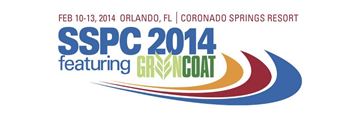Search
Products tagged with '2014 Conference Papers'
View as
Sort by
Display
per page
Performance Analysis of Commercial Azoles for Yellow Metal Corrosion Control Utilizing Surface Analysis
Product Number:
51314-4246-SG
ISBN:
4246 2014 CP
Publication Date:
2014
$0.00
Performance of Two-Coat v/s Three Coat Paint Systems
Product Number:
41214-829-SG
Publication Date:
2014
$20.00
Polyurethane Coatings: OSHA’s NEP Program and Review of the Safe Use and Handling of High Performance Coatings from the Isocyanate Supplier’s Perspective
Product Number:
41214-816-SG
Publication Date:
2014
$20.00
Positive Displacement Proportioning of Two-Component Epoxy Intumescent Coatings for Passive Fire Protection
Product Number:
41214-851-SG
Publication Date:
2014
$20.00
Preparation of Concrete for Rapid Coating Application
Product Number:
41214-822-SG
Publication Date:
2014
$20.00
Qualification of Coatings for Launch Facilities and Ground Support Equipment Through the NASA Corrosion Technology Laboratory
Product Number:
41214-832-SG
Publication Date:
2014
$20.00
Rapid Installation of Replacement Connection Plates on the County of Placer/Foresthill Road Bridge - A Novel Engineered Approach to a Unique Set of Challenges
Product Number:
41214-862-SG
Publication Date:
2014
$20.00
Re-Evaluating Electrochemical Impedance Spectroscopy (EIS) for the Field Inspector’s Toolbox: A First Approach
Product Number:
41214-837-SG
Publication Date:
2014
$20.00
Regulatory Update: Current and Emerging Trends in Occupational and Environmental Health
Product Number:
41214-828-SG
Publication Date:
2014
$20.00
Replica Tape- A Source of New Surface Profile Information
Product Number:
41214-808-SG
Publication Date:
2014
$20.00
Restoration of Historic Architectural Tiffany Metalwork Relies on HighPerformance, Environmentally Safe Coating System for Long-Lasting Protection
Product Number:
41214-872-SG
Publication Date:
2014
$20.00












